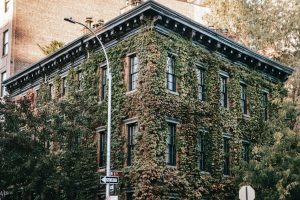Echoes of the landscape: the sounds of the environment in the spaces we inhabit
The centering action of sound affect man’s sense of cosmos -Walter Ong (1991)¹
The actions of our daily life are associated with the interaction of our senses. The hearing sense, often overlooked, nevertheless gives us many clues to understand the place we are in. Echoes, silences and sound reverberations continually provide us with information about the places where we live and pass through.
The study of sounds and their effects on human beings has been of interest to several disciplines. From the analysis of the acoustics² of spaces, or the notion of soundscape coined by Murray Schafer in 1977³, or the so called Sound Studies⁴, or even the more recent term of aurality, which refers to sound perception.
For architect Juhani Pallasmaa (1996)⁵, the essential experience created by architecture is calmness. For him, sight is directional, while sound is omnidirectional; sight implies an exteriority, while sound creates an experience of interiority. Silence – or the absence of sound – focuses our attention on our mere existence and makes us realize how fundamental solitude is.
While all these different conceptual perspectives enrich the knowledge about the relationship between man and sound, as architects and landscape architects, what elements of sound and acoustics should we take into account in the habitat proposals we develop?
The first thing to consider, particularly in a residential project, is the environmental quality of the context. If we do it in a natural, rural, urban or periurban environment. Depending on the amount of noise or noise pollution, we would probably decide to set up barriers, such as the use of double glazing for doors and windows, as well as the outdoor installation of slopes or acoustic barriers (wooden fences, bushes, etc.).
Vegetal acoustic barrier Photography: Pixel2013 – Pixabay
A fundamental consideration for indoor acoustic comfort is the materials and coatings of the spaces. We must take into account that low density or textured elements -such as wood, fabric furniture, tapestries and curtains- tend to reduce echo and absorb noise. Likewise, some studies reveal that walls composed of plants have a great potential or noise absorption, and could be used for acoustic insulation⁶.
“The management of sound and silence -in its right proportion- is one more sensory element that helps us to create a sense of seclusion and an experience of inner peace.”

Walls composed of plants Photography: Charles Parker – Pexels
Other interesting aspects to implement -to make a sound transition between indoor and outdoor spaces- are those elements that mag- nify the beneficial sound effects of natural elements, such as the foliage of trees, palms and bushes, which make a characteristic sound in the wind. A frequent resource is also the use of water in troughs, canals, fountains or waterfalls, which can be attractive to birds, insects and local fauna.
In conclusion, the soundscape should be an element to be taken into consideration in architectural and landscape projects at any scale. From the acoustic dimension of the materials, the management of sound barriers and the relationship with the outdoors.

Canals Photography: Ryutaro tsukata – Pexels
¹ Ong Walter in Pallasmaa, Juhani. The Eyes of the Skin: Architecture and the Senses. John Wiley & Sons, 2012, p.53.
² Ver Isbert, Antoni Carrión. Diseño acústico de espacios arquitectónicos. Universitat Politècnica de Catalunya. Iniciativa Digital Politècnica, 2004.
³Schafer, R. Murray. The Soundscape: Our Sonic Environment and the Tuning of the World. Simon and Schuster, 1993.
⁴ Ver Bull, Michael. The Routledge Companion to Sound Studies. Routledge, 2018.
⁵ Pallasmaa, Juhani. The Eyes of the Skin: Architecture and the Senses. John Wiley & Sons, 2012, p. 53-55.
⁶ Cuaderno de Cultura Científica. «Las plantas como aislantes acústicos», 5 janvier 2015. https://culturacientifica.com/2015/01/05/las-plantas-como-aislantes-acusticos/.








